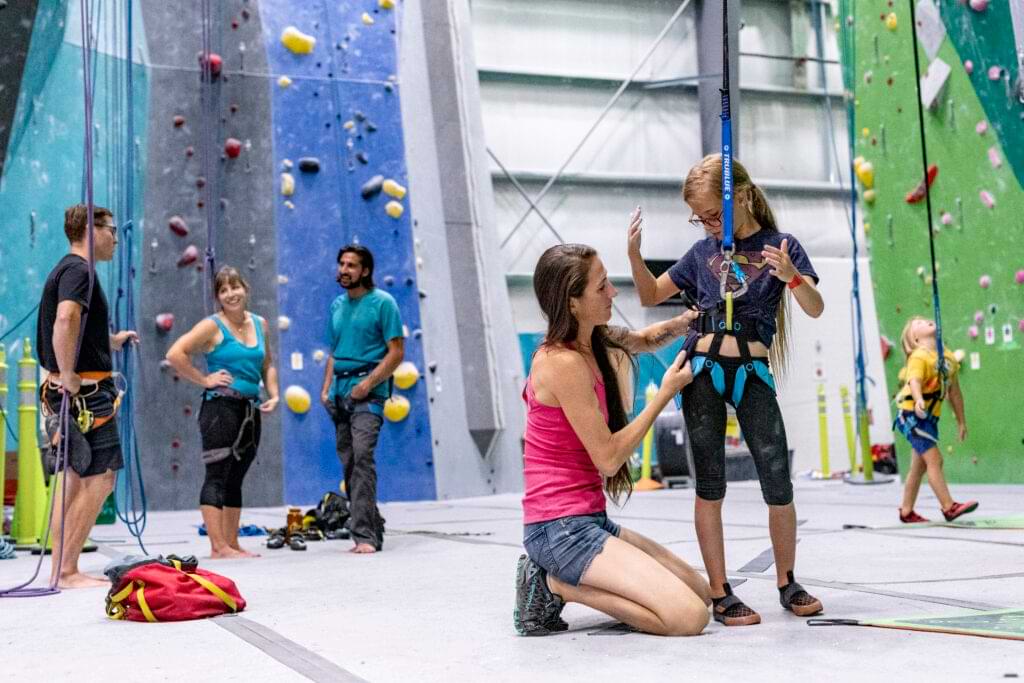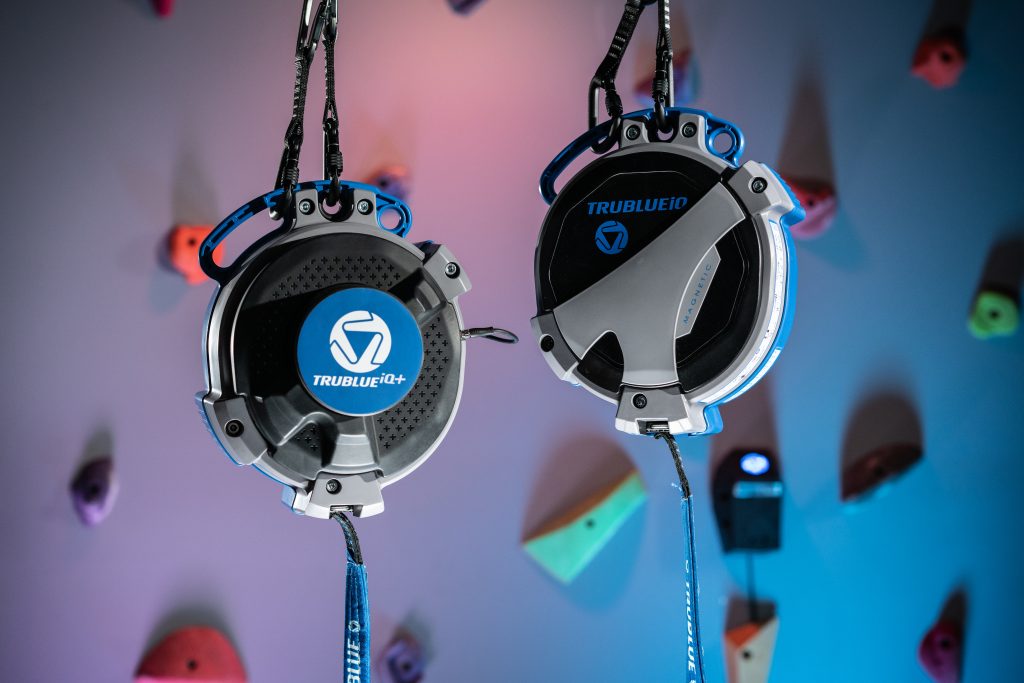When you are a beginner learning to climb, you'll spend most of your time climbing with auto belays, top-rope climbing, or bouldering. These climbing styles are great when you are learning the basics of climbing technique and belaying skills. Once you are confident on a top-rope, it's time to take your climbing to the next level with lead climbing.
What is lead climbing? When you are lead climbing, you are tied into one end of the rope and clipping the rope into protection on the wall as you go. You must progress the rope as you climb, so falls on lead are bigger than on top rope. Because of this additional risk, there are many additional skills to learn if you want to start lead climbing.
In this video, Chris Wall provides a primer on lead climbing and how you can practice the necessary skills in the gym. Luckily, most modern climbing gyms have auto belays, and you can practice lead climbing with an auto belay as a backup belayer. This will give you additional confidence as you learn new skills and take your climbing to the next level.
Video Transcription
Hi, everyone, I'm Chris Wall, head trainer at the Boulder Rock Club. Today, I'm gonna take you through the steps about learning how to lead climb in the gym. It's fun to top rope and boulder inside the gym, but if you really wanna take your climbing to the next level, you're gonna have to learn to lead. Lead climbing can be really fun and adventurous, but it can also be really scary. The more you prepare yourself mentally and physically, the more fun you're gonna have, and the safer you're gonna be when you tie into the sharp end.
So the first step in learning how to lead climb is learning how to clip. Learning how to clip seems like it should be pretty simple, but you're gonna wanna practice this on the ground before you take it up on the wall with you. I have two preferred methods to clip.
The first of which is the Snap Clip. You're going to take the rope, you're gonna bring it up to the quick draw, pinch between your thumb and index finger, control the quick draw with your middle finger, use your thumb and index finger to force the rope through the gate. Once again, bring the rope up to the quick draw, pinch between your thumb and index finger, control the quick draw with your middle finger, force the rope through your gate with the thumb and index finger.
The second method is called the Pinch Clip. You're going to bring the rope up to the quick draw in the same fashion as before, drape it over the end of your index finger, control the quick draw with your thumb and middle finger, force the rope through the gate with your index finger. Once again, bring it up, pinch with your thumb and middle finger, force it through with your index finger. So, once you feel comfortable clipping on the ground, it's time to take it up on the wall.
One of the easiest ways to do this is with an auto belay. Tie into your lead rope, and then clip into your auto belay. Now, the auto belay is going to be your belayer on the way up. So, you have all the benefits of practicing your leading, with the safety of top roping. Remember, trying to find efficient positions and stances to make your clips. And remember to practice both the snap clip, and the pinch clip, 'cause you're gonna need to know how to do both when you're on lead. Falling while lead climbing is probably the scariest part of the whole lead climbing experience. And, in order to get used to it, you're gonna wanna start small. So when you're practicing your clipping and your lead climbing on the auto belay, also take some time to practice some falling as well.
Now, as you get better and better with your clipping and finding your stances, you're gonna wanna get on harder and harder routes. This is gonna help prepare your mind and your body for the difficult lead climbing to come. And then when you're ready to switch to actual lead climbing, start with small falls. And then gradually build up to the point where you're taking more realistic size falls. But make sure this process is gradual. You don't wanna frighten yourself too badly on your first day.
Learning to take a lead fall is like any skill in climbing, it's gonna take practice, and it's best if you do it in a safe environment as possible. Like the adage goes, "It's not the fall that gets you, it's the sudden stop." So, make sure you're high enough from the ground, about five bolts or so, so that you have no chance of hitting the ground. And make sure you're doing it on an overhanging wall, with no slabs or ledges beneath you that you could possibly hit. It's best to do this with an experienced belayer, and let your belayer know that you're about to take the fall. So, climb up to your last bolt, maybe a couple feet over it, and before you let go, say, "Falling!" And that way they know you're coming, and you've prepared yourself emotionally to let go.
Then just enjoy the ride. You might even like it. Alright, you've prepared yourself, you know how to clip, you know how to fall, it's time to get on the sharp end. I recommend getting on something well below your ability, so you can concentrate on the safety aspects, the clipping, the positions, without any real danger of falling. As you get good at that, you're gonna move up slowly, one grade at a time. You don't wanna push yourself to the point where you're compromising your safety when you're still a novice leader.
Thank you for watching this video on "Learning How to Lead." For more information, check out trublueclimbing.com. And be careful out there.



